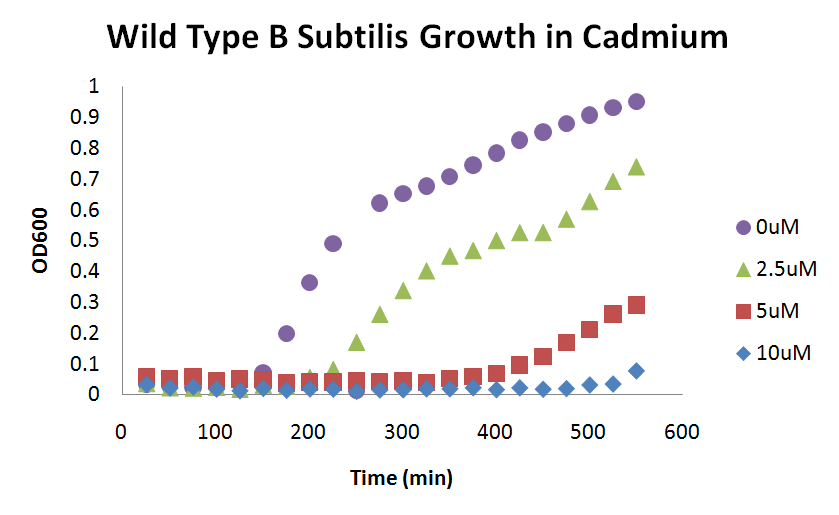Team:Cornell/Project/Chassis
From 2009.igem.org
ChassisBacillus subtilis is a gram-positive bacteria, 5-10uM in length. We chose it as our chassis primarily for its complex metal-ion homeostasis system as well as its ease of genetic manipulation. Some heavy metals, such as manganese, iron and zinc, are essential to micro-organisms as trace nutrients, in contrast to others such as cadmium and lead, which have no known beneficial roles. However, all heavy metals are toxic at high (micro- or millimolar) concentrations. Yet it is widely known that certain bacteria are capable of growing in metal contaminated areas. These bacteria are usually adapted to the presence of toxic metals by genetically encoded resistance mechanisms, whose expression is precisely regulated. Specifically, these resistance mechanisms towards many toxic metals work by excretion of the metal by an energy-dependent pump in the cell membrane. To test B subtilis' ability to thrive in high concentration of heavy metals we grew B subtilis in various concentration of Cadmium and compared growth curves. The growth curves showed that B subtilis' health is affected by increasing concentration of Cadmium. With this knowledge we can decide on what elements of the heavy metal ion homeostasis system to manipulate to increase or decrease Cadmium influx. Knocking out the gene mntH that codes for a protein that Cadmium influxes through increases B subtilis ability to grow in Cadmium. The results of this growth curve show us how different strains of B subtilis respond to Cadmium. Using this information, we can better design our biosensor. |
 "
"


